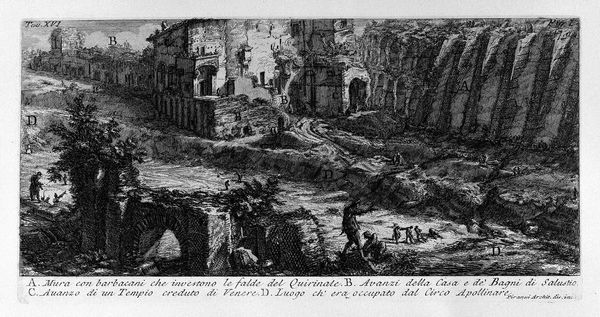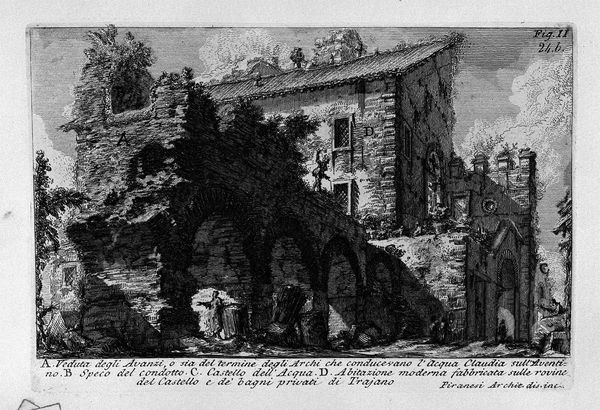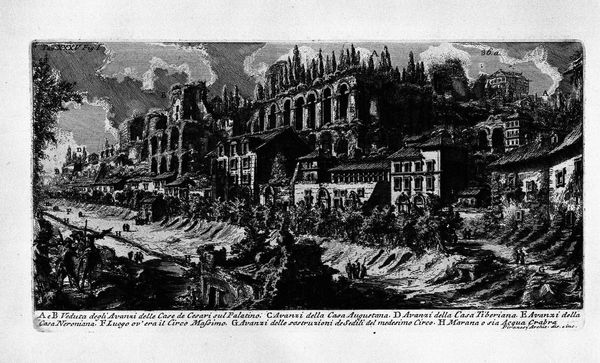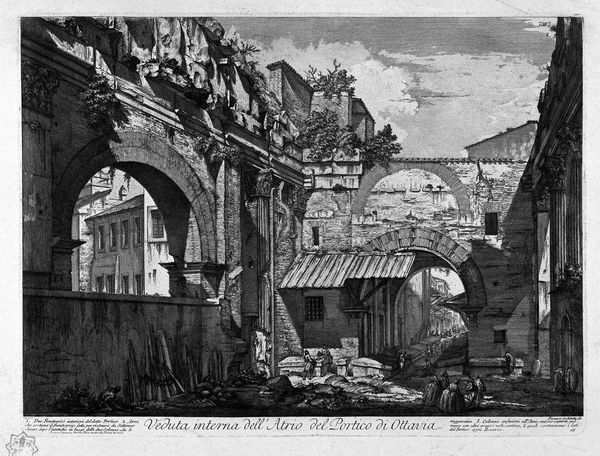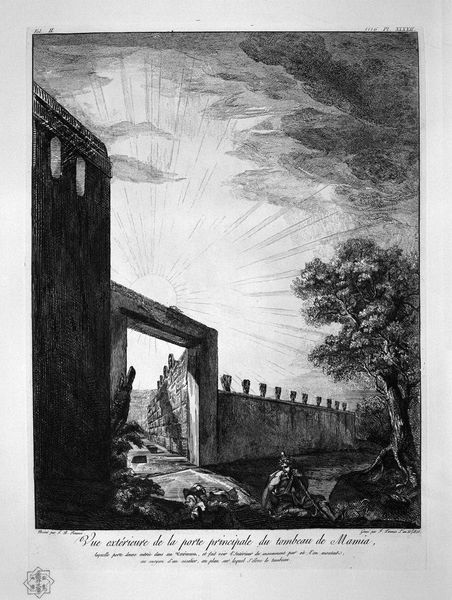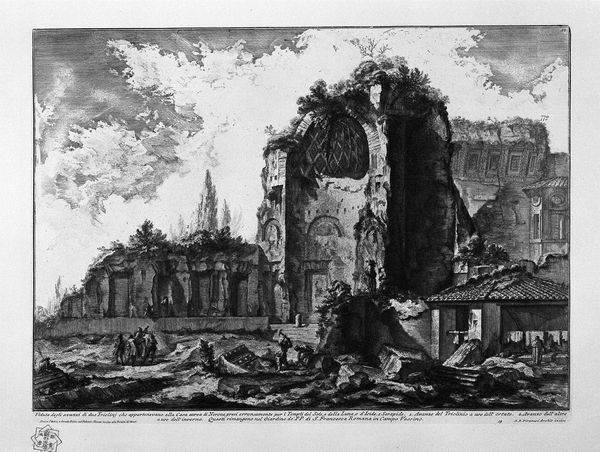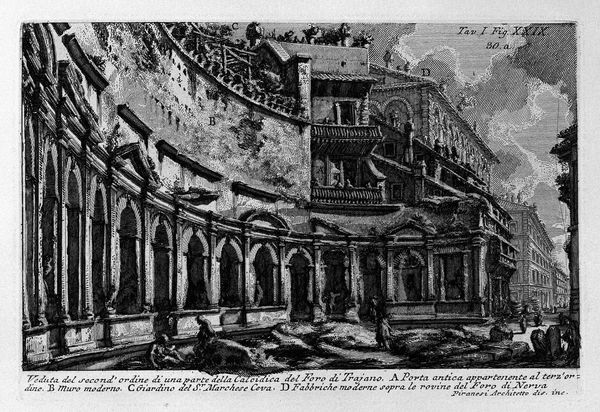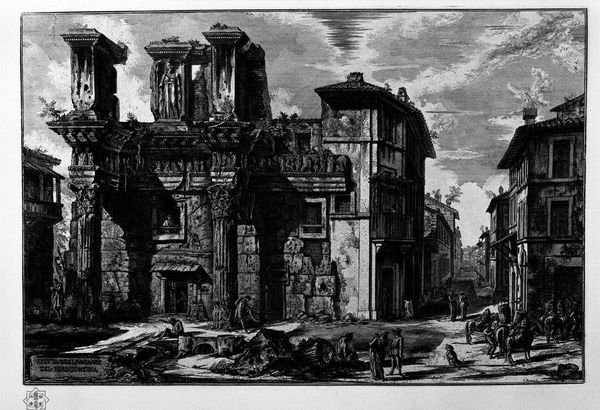
The Roman antiquities, t. 2, Plate XLIV. Interior view of the burial chamber in the Vineyard Gate S. Casali Sebastiano.
0:00
0:00
print, etching, photography, engraving, architecture
#
neoclacissism
# print
#
etching
#
landscape
#
form
#
photography
#
romanesque
#
ancient-mediterranean
#
column
#
carved
#
history-painting
#
charcoal
#
engraving
#
architecture
Copyright: Public domain
Curator: This is a print by Giovanni Battista Piranesi titled, "The Roman antiquities, t. 2, Plate XLIV. Interior view of the burial chamber in the Vineyard Gate S. Casali Sebastiano.” Editor: What strikes me is the profound sense of melancholy. It feels like a grand ruin slowly surrendering to the inexorable forces of time and nature. Curator: Piranesi's skill is evident in how he uses light and shadow to create depth and texture. Note the precise rendering of the stonework. The etches cross and build volume, don’t they? Editor: Absolutely, but the architecture also speaks to a deeper theme. The tomb, the Roman ruin... the architecture suggests cultural memory. Look at the crumbling arches – they tell a story of mortality. The work feels symbolic of a culture dying. Curator: A point well taken, yet consider the figures placed within the landscape. Their scale relative to the architecture creates a deliberate sense of dwarfing. A calculated choice on the artist's part, a juxtaposition of grandeur and fragility. Editor: The vine gate—those repeated archways—create a potent symbol. For me they represent the gates to the afterlife. The scene also feels alive, notice the vegetation taking hold. There is nature triumphing in the ruins. Curator: Notice that within the ruin we also see the mark of previous habitation – those repeating vertical rectangles of dark indicate other chambers. Piranesi also directs our vision along diagonals which lend the scene more activity, doesn’t it? The composition thus echoes history. Editor: Yes, indeed. The image leaves one with a feeling of awe, I agree. Its beauty and the sublime sense of the impermanence of things. Curator: Agreed. The formal arrangement and the symbolic impact – together they form a remarkably evocative artwork.
Comments
No comments
Be the first to comment and join the conversation on the ultimate creative platform.
